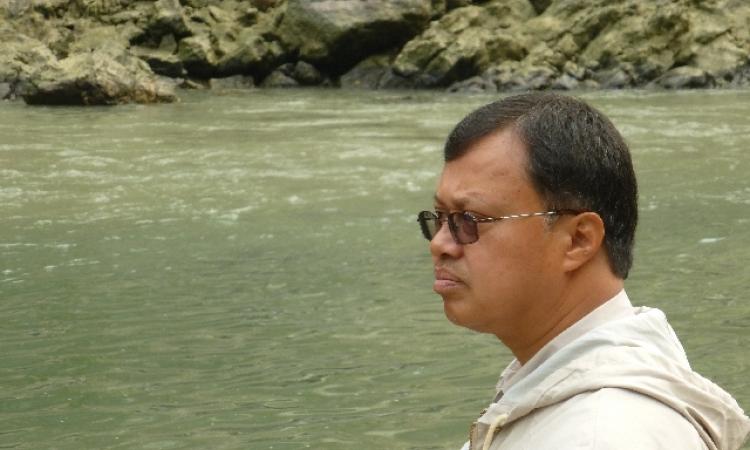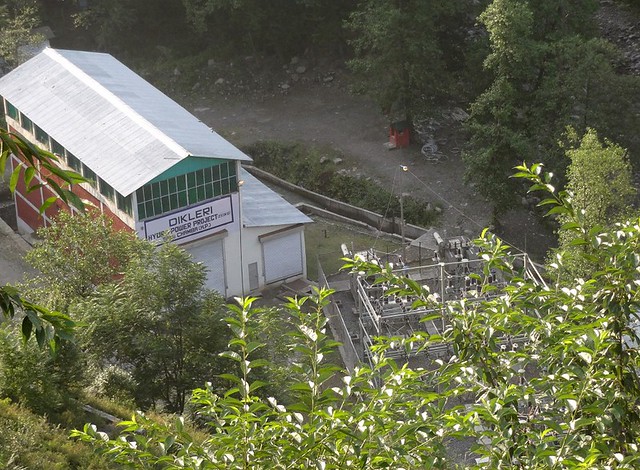
Dr Hari Kumar Shreshta is an engineer, teacher, and a passionate crusader for healthy rivers. On a recent visit to India, he spoke with India Water Portal about the efforts to introduce the concept of environmental flows in hydropower-focused Nepal.
What is the situation around hydropower in Nepal?
During the environmental impact assessment process, the public consultation that is carried out is true to the spirit of the process. It is posted in all national newspapers and also in several offices. People do come to know of it and attend in large numbers.
However, hydropower developers only give the information that is convenient for them. We want to enable the local communities to ask the right questions by providing them with information. Local journalists help in this regard by publishing news of hydroelectricity projects. Nepal has a lot of FM stations; they broadcast news related to this issue. Hydropower developers know what land is needed and buy it in advance of the project announcement at rates above the market price. This makes people eager to sell, and they do not hold out for a better price, or benefits such as shares in the dam. Afterwards, it is difficult for the previous landowners to say 'we have been tricked'.
What are the current provisions for environmental flow releases in Nepal?
Environmental flows are known by many names in Nepal--ecological, downstream, or environmental flows.  There are currently two provisions in effect:
There are currently two provisions in effect:
- Hydropower development policy, 2001 (clause 6.1.1): When a hydroelectric plant is designed, constructed, or implemented, either release 10% of the minimum monthly flow or as stipulated in the EIA study, whichever is higher. The idea is that if 10% is too low, it will be considered in the EIA. Practically though, people only consider the first part, the 10% of minimum flow. This has become the norm.
- There is a separate policy for hydropower development around conservation areas. Per that, if the intake of a hydroelectric plant is within the conservation area, then the minimum downstream flow has to be at least 50% of the monthly flow. If the intake is not within the conservation area but the river flows through the conservation area, or if the intake is above the conservation area, then it should be 10% of monthly flow.
What work are you carrying out on environmental flows awareness?
I have spoken with the main stakeholders responsible for approving designs of hydroelectric plants--the Department of Electricity Development. I said, “10% of the minimum flow is too low. Why create conflict with the locals by approving such designs?” They seemed positive, and we conducted an environmental flows assessment training. For this, other stakeholders like the Department of Water Supply and Sewerage, Nepal Electricity Authority, Independent Power Producers Association of Nepal (IPPAN) were invited. This training was conducted with the support of IWMI and the Forum for Policy Dialogue on Water Conflicts, who sent trainers.
IWMI in collaboration with the Himachal government has developed a software called the 'Ganga e-flows calculator'. This was taught at the program, which received a positive response. The delegates said that the concept that 'E-flows should mimic a natural hydrograph and not be just a flat line' was new to them. Now, Nepal Engineering College and the Department of Electricity Development are jointly organising a training programme for the Ministry of Energy (formerly Ministry of Water Resources).
Since I am a teacher, my ideas are biased towards teaching. If the skills for environmental flows assessment can be incorporated into the curriculum, the process will go on for years. This will produce a cadre of officials who have the skills and the understanding to implement this. I tried my best to achieve this. I talked with university officials, submitted a curriculum to the university and finally got the approval. From this semester onwards, we will be offering technical management courses at the graduate level on environmental flows assessment.
How do you aim to bring about changes in government policy regarding environmental flows?
What I want to convey to the Ministry Officials is, “You are presently spending billions in constructing hydropower, but you go to areas where people do not like you. Then why are you going there? Rather than that, if you consider environmental flows in design itself, then chances of conflict may be much less. It is in your interest to implement environmental flows into the design of hydroelectric projects”. I hope that it can be scaled up higher to the point where policy can be changed in favour of better environmental flow provisions so that the downstream conditions will be better. For them to get a better idea of the impacts, I also prepare spreadsheets showing the difference in power generation with and without environmental flow releases.
District officials are an important group that need to be included in generating acceptance of environmental flows. Each year they have to prepare a resource book and development plan for their district. The officials of various sectors such as agriculture and irrigation revealed that they have no idea of either what is happening with downstream releases from various dams or the climate change impacts in their area. I offered to provide them the data concerning change in temperature, precipitation and river flows in their respective districts. Using this, they can determine the trends, which will allow them to determine the availability and demands for the next decade. I also explained how this data can be used to determine the water available to generate peaking power. The challenge now is to enable them to plan. For this, we need go to the field offices and provide them with created spreadsheets and the training to use those spreadsheets. So far, this has received a positive response from both the officials at the district level and those at DOED.